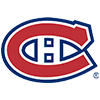In last week's episode of Pitching 3D, we tackled pitchers to avoid as fantasy trade deadlines approach. This week we turn the tables, looking at a group of pitchers who might be worthy trade targets. All it takes is one owner to under or over-value a player and various league dynamics will dictate the relative value of some of these pitchers, but the idea is to seek out pitchers who could carry additional value in the second half of the season that exceeds the current price tag. The goal is positive equity on these deals, so rather than hash through the worthwhile investments that have retained their value, we'll look at pitchers who - like a dented can of beans - have some flaws that might fuel a discount.
Just a quick reminder: this list of trade targets is for single-year leagues only. I don't consider keeper value in highlighting these players, looking at everything within the window of the next two-plus months. Age and experience play a large role with pitchers as we look at second-half value - the young guns are littered with examples of pitchers whose innings might be capped, resulting in a late-summer shutdown or a move to the bullpen. A pitcher that can be trusted to take the ball in late August and through September can be immensely valuable, particularly for those teams have fallen behind on their innings caps and need to stockpile arms.
David Price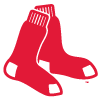
He might have an uninspiring stat-line, but
In last week's episode of Pitching 3D, we tackled pitchers to avoid as fantasy trade deadlines approach. This week we turn the tables, looking at a group of pitchers who might be worthy trade targets. All it takes is one owner to under or over-value a player and various league dynamics will dictate the relative value of some of these pitchers, but the idea is to seek out pitchers who could carry additional value in the second half of the season that exceeds the current price tag. The goal is positive equity on these deals, so rather than hash through the worthwhile investments that have retained their value, we'll look at pitchers who - like a dented can of beans - have some flaws that might fuel a discount.
Just a quick reminder: this list of trade targets is for single-year leagues only. I don't consider keeper value in highlighting these players, looking at everything within the window of the next two-plus months. Age and experience play a large role with pitchers as we look at second-half value - the young guns are littered with examples of pitchers whose innings might be capped, resulting in a late-summer shutdown or a move to the bullpen. A pitcher that can be trusted to take the ball in late August and through September can be immensely valuable, particularly for those teams have fallen behind on their innings caps and need to stockpile arms.
David Price
He might have an uninspiring stat-line, but Price has a lot going for him. Despite pitching in the brutal AL East, Price gets to avoid facing the league's best offense and has been pitching in this division for the vast majority of his career, so context is of minimal concern. More importantly, he has flashed elite numbers in the strikeout department and has shown improvement since making a mechanical tweak to get his delivery more in sync. That said, he continues to frustrate, trading big-K games with disaster starts that feature a barrage of hits and, occasionally, a frighteningly-low K count. Consider that he recently had a string of three consecutive starts of 10 strikeouts apiece, bookended by games in which he only had one strikeout in each turn. He's also given up 22 hits in his last two starts, covering 11.1 innings.
Basically, I expect his owners to be completely fed up with Price at this point, sick of his destroying their ratios and tilted by his recent low-K outings. However, the upside is still immense, and if you're trying to acquire Price then it means that his shaky performance of 2016 has been on someone else's watch. It's a risky proposition, but if there weren't risks then there wouldn't be a discount, and I suspect that his first-half struggles and recent frustrations conspire to drive the Price tag to a season-low.
Yu Darvish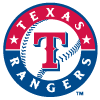
Darvish's incendiary stuff has survived his trip under the knife, giving back the immense upside in K/9. His quick return to the disabled list (for arm troubles, no less) is certainly concerning, raising the caution that he might be handled with kid gloves the rest of the way or that he might be back on the DL in short order, but it has also functions to reduce his price tag in trades (depending on the owner).The Rangers have let Darvish get his pitch count up to 90 in each of his last two starts, during which he's amassed 20 strikeouts in 10.1 innings. There's considerable risk, but the upside is enormous, and the missed time in the first half means that he won't be faced with any innings-related restrictions during the second half of the season. He could be a monster acquisition that is worth pursuing, particularly if a discount is involved.
Adam Wainwright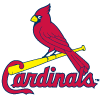
A&W has been slowly regaining his stuff and his command throughout the season, and we can see the impact in his month-by-month results this season. April was a nightmare in every department, while May was mostly filled with baseline quality starts and low K-counts - he maxed out at five strikeouts in any one of the six starts that he had that month. In fact, he hadn't struck out a half-dozen batters in any of his first 11 trips to the mound, but Waino began to get the Ks back in June, striking out at least six batters in four of his five stars and peaking at nine strikeouts in a game. He also improved his ERA for the third consecutive month, though he finished the month on a six-run clunker against the Royals.
However, he has been on a roll in July, posting a 3-0 record, 0.93 ERA and 27:3 K:BB ratio in 29.0 innings across four starts. He has posted eight or more Ks twice in the four games, while the other two starts have covered 16.0 scoreless frames. He hasn't allowed a homer since May. It's gonna be tough for Wainwright to continue the improve-every-month streak into August, but it does look like he has turned a corner. He could be a great value if his early-season struggles can be parlayed into a lower price tag.
John Lackey
The ERA is up higher than you would like to see, but that might just work to one's advantage in discounting his cost, because Lackey has the other three categories covered. His strikeouts and his walks are both up this season, following five years of some of the most consistent rates in the game, right around 20-percent strikeouts and 5.5-percent walks. This year, he's bumped the Ks to 25.6 percent and the walks to 7.6 percent, but the Cubbie defense has fueled the lowest hit rate and the lowest WHIP of his career, and for those in quality start leagues, he already has 13 QS in 19 turns. With some of the best offensive support in baseball, Lackey could be a four-category contributor down the stretch. His advanced age (37) and extensive track record of fantasy mediocrity could keep his price much lower than his expected value.
Lance McCullers
The walks are completely out of hand, having given away 42 free passes in just 70.1 innings this season - in 2015, he walked 43 batters in 125.2 frames. He has also given away just two homers, which is a big part of why the ERA is so low at 3.33 despite the 1.56 WHIP, so there are danger signs abound that things could get worse. The control issues don't seem to be letting up, either, with four walks allowed in each of his last three starts. The reason that McCullers makes this list is the belief that he will get things under control - as he has shown in the past - yet retain the monster strikeout rate. Even though the walks have been sky-high, McCullers has stepped up his game in the other categories over his last handful of starts, including a 2.10 ERA and 40 strikeouts over 30.0 innings in his last five turns. The early-season DL stretch means that the youngster won't have his innings limited by season-over-season counts, and it might contribute to a lower cost at the trade table. He personifies high-risk/high-reward.
Danny Duffy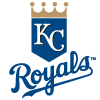
Whereas walks are a current cause of concern for McCullers, they tip the scales of optimism on Duffy. Heading into this season, Duffy had a walk rate of 3.8 BB/9 for his career, never dipping below 3.2, but this season he has cut the career rate in half with just 1.9 BB/9. But that's just the tip of the iceberg, as the trimmed walks have come paired with a massive leap in strikeout rate, improving upon a career rate of 7.6 K/9 to an astounding 10.0 K/9 this season. He started the season in the bullpen and thus under the fantasy radar, then spent a month building his stamina while in the rotation and has finally been unleashed over the past month, with over 100 pitches in six straight starts. He has thrown at least 136 innings each of last two years and his early stint in bullpen has kept him at just 94.2 frames so far this season. Further, his rates have translated from the bullpen to the rotation, paving the way for Duffy to have a big impact down the stretch.
Matt Shoemaker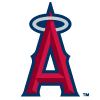
Shoemaker is coming off a rough season, and he started 2016 on a disastrous run, carrying a 9.12 ERA with just 17 strikeouts in 24.2 innings heading into his start on May 16. Then things turned around, and since that start Shoemaker has a 2.56 ERA and impeccable 98:12 K:BB ratio in 13 starts and 88.0 innings of work. So what changed?
The split. The right-hander threw splitters 18.7 percent of the time prior to that start, topping out at 20 splits in any one start. But in that May 16 start against the Dodgers, he threw 40 of them. He threw 100 splitters over the following two ballgames, striking out 23 batters along the way, 14 of which came via the split. He has thrown the splitter on 41.2 percent of his pitches since making the adjustment, and the results are in the numbers, as the split has finished more than 60 percent of his strikeouts over that span. Hopefully his owner hasn't noticed.




















